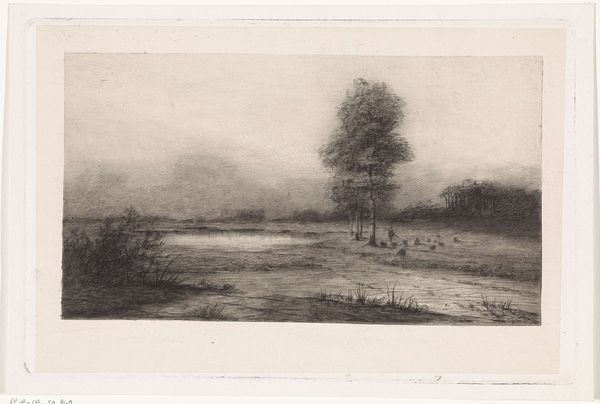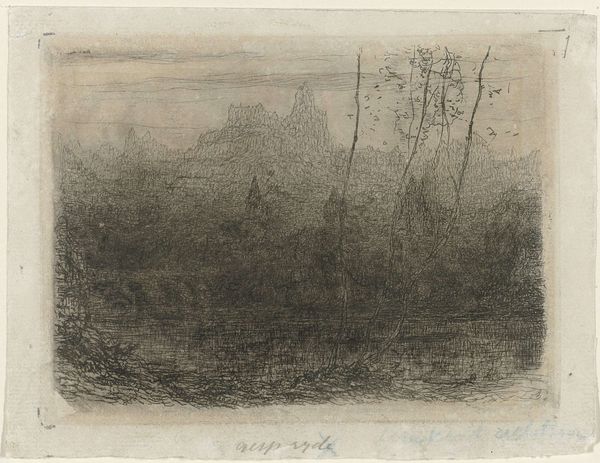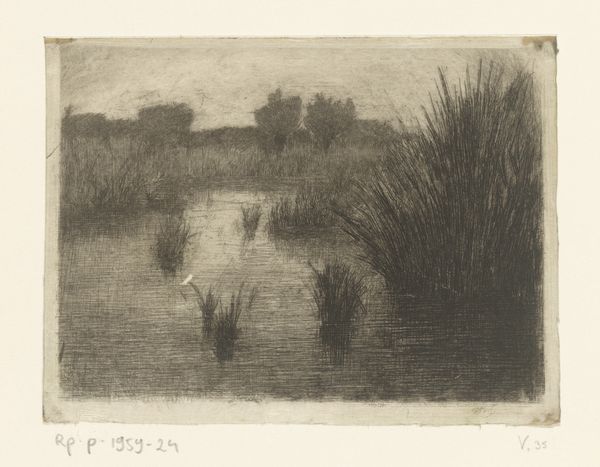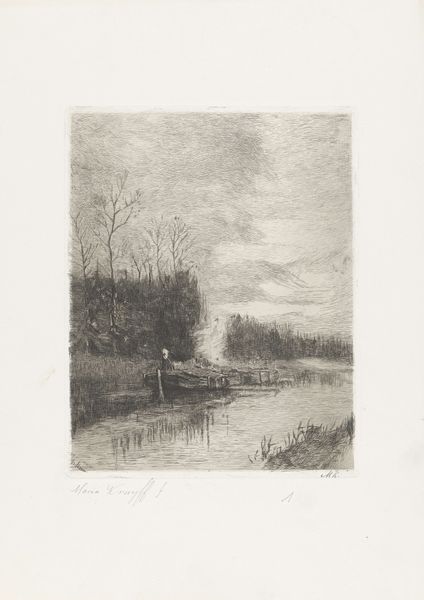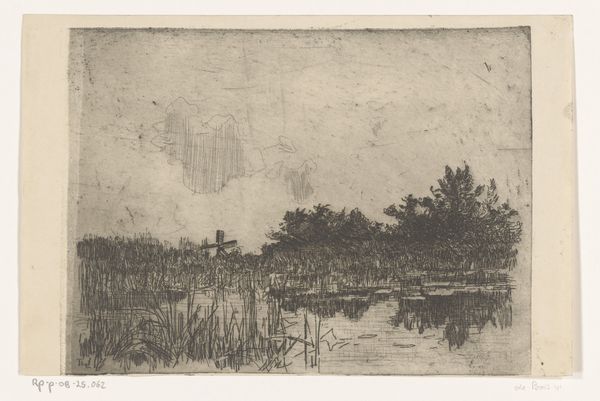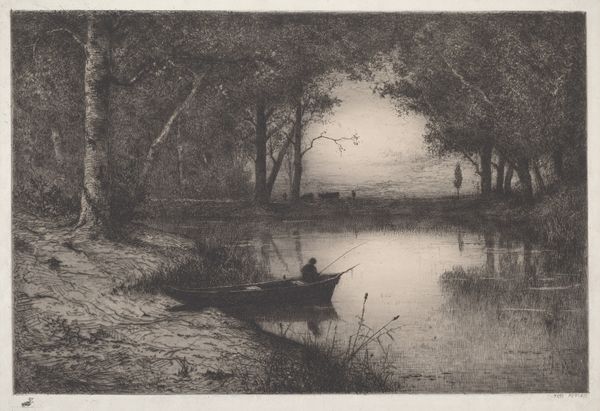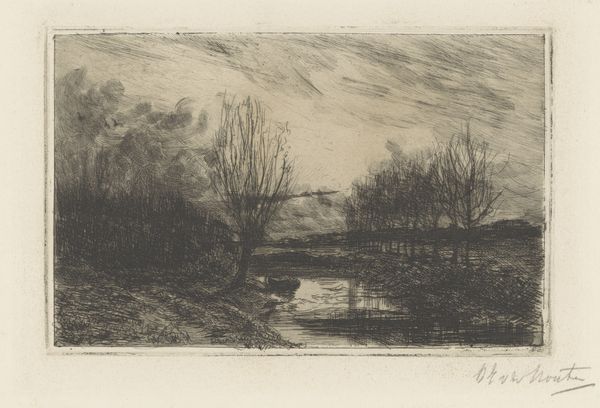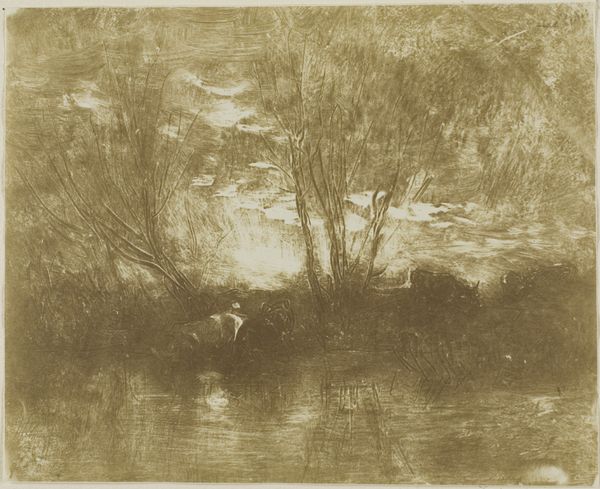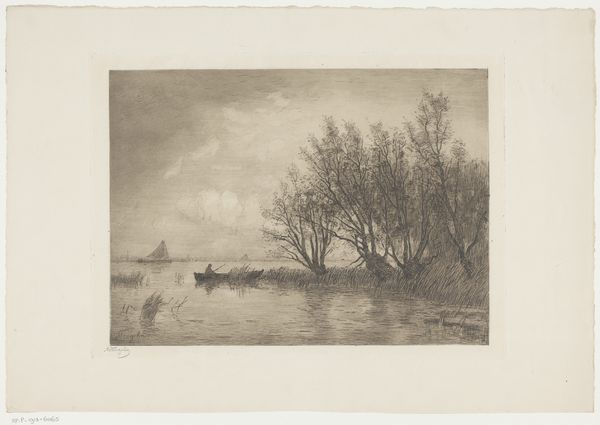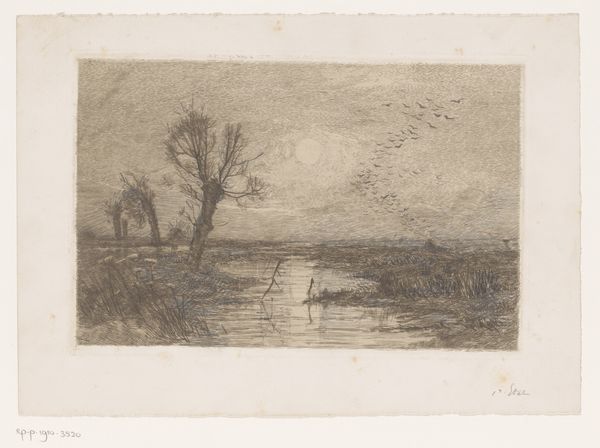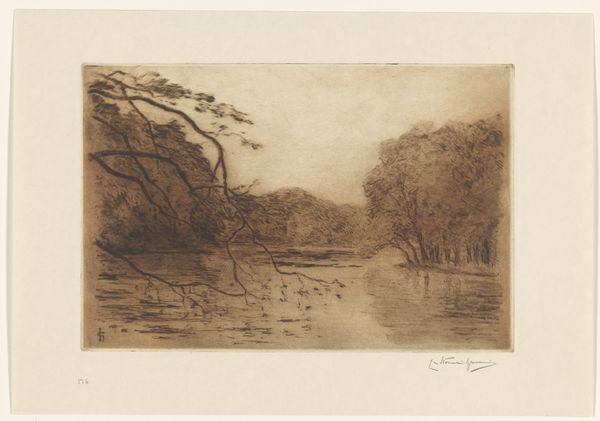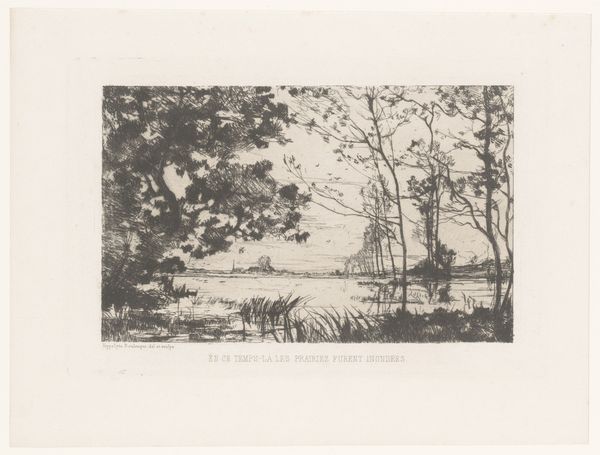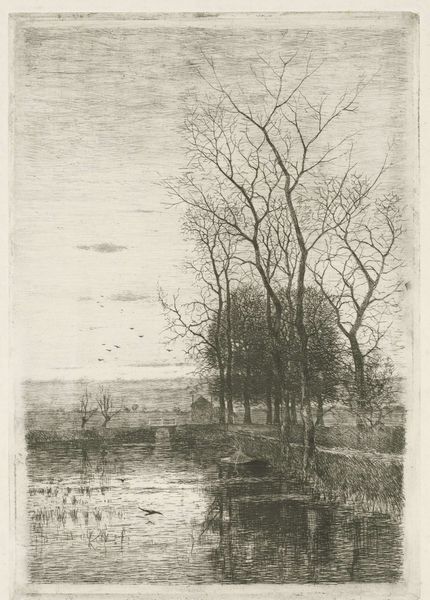
drawing, print, etching, graphite, wood-engraving
#
pencil drawn
#
drawing
#
natural tone
# print
#
etching
#
pencil sketch
#
landscape
#
united-states
#
graphite
#
wood-engraving
#
watercolor
#
realism
Dimensions: 7 3/16 x 9 13/16 in. (18.26 x 24.92 cm) (image)9 11/16 x 12 3/4 in. (24.61 x 32.39 cm) (sheet)
Copyright: Public Domain
Editor: We’re looking at “Morning on the Marsh,” an etching by George A. Teel, created sometime in the 19th century. It’s a beautifully rendered landscape, very subtle, almost monochromatic. What stands out to you in terms of the symbolism at play? Curator: The marsh itself is a potent symbol. Think about the psychological weight of the swamp in cultural memory – often a place of mystery, transition, lurking dangers, but also fecundity. This isn’t just a pretty scene; it taps into deep-seated associations. Do you see how the birds might reinforce this reading? Editor: I hadn’t thought of it that way, but the birds flying into the marsh… maybe they’re carriers of souls, or signs of change? The marsh as a liminal space between worlds, perhaps? Curator: Precisely! They could represent the passage of time, or even messengers navigating the boundary between the mundane and something… other. What feelings do the natural tones evoke in you? Editor: A kind of melancholy, but also tranquility. There's a stillness to the scene, like a memory. Perhaps a fading one given the chosen materials. Curator: Indeed, the print medium adds another layer of meaning, doesn't it? Etchings have an inherent quality of duplication, echoing collective memory or shared experience. They are about distribution. Does it remind you of something else, of something collective? Editor: I can see that; a bit like old photographs – accessible, widely shared, holding collective cultural values. But perhaps also obscuring individuality. Curator: A thoughtful reading. This work becomes more layered with the historical perspective we place on it. Considering its symbols in relation to its distribution allows an ever fuller appreciation for the art work. Editor: That's really fascinating. I'll definitely look at landscapes differently now, considering not just what's depicted, but also the cultural baggage it carries.
Comments
No comments
Be the first to comment and join the conversation on the ultimate creative platform.
